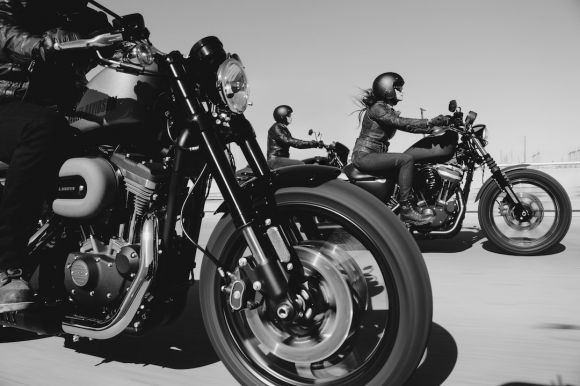Riding a motorcycle can be an exhilarating experience, but it also comes with certain risks. One of the most important skills that every rider must possess is the ability to perform emergency stops. Whether it’s due to an unexpected obstacle on the road or a sudden loss of control, knowing how to handle emergency stops can mean the difference between a close call and a serious accident. In this article, we will discuss the key steps to perform a safe and effective emergency stop on a motorcycle.
Maintain Focus and Control
When faced with an emergency situation, it is crucial to remain calm and focused. Panic can cloud your judgment and lead to poor decision-making. Instead, stay composed and maintain control of the motorcycle. Grip the handlebars firmly and keep your eyes on the road ahead.
Apply Both Brakes Gradually
To perform an emergency stop, apply both the front and rear brakes simultaneously. However, it is important to remember not to grab the brakes abruptly. Instead, squeeze the levers gradually to avoid locking the wheels and losing control. This will allow the weight of the motorcycle to transfer forward, maximizing the braking power of both wheels.
Shift Your Body Weight Backwards
As you apply the brakes, shift your body weight backwards to counteract the forward weight transfer. This will help prevent the motorcycle from tipping forward and potentially flipping over. Keep your arms slightly bent and your body relaxed to absorb any sudden changes in momentum.
Modulate the Brakes
While it is essential to apply the brakes firmly, it is equally important to modulate the pressure as needed. If you feel the wheels start to lock up and skid, release the brakes slightly and reapply them gradually. This will help maintain traction and prevent a loss of control. Remember to keep your eyes focused on the road ahead and adjust your braking accordingly.
Use Engine Braking
In addition to using the brakes, you can also utilize engine braking to slow down the motorcycle during an emergency stop. By downshifting through the gears and using the engine to slow down, you can reduce the strain on the brakes and maintain better control of the motorcycle. Practice this technique in a safe environment to become familiar with the proper timing and gear selection.
Anticipate and Avoid
While emergency stops are sometimes unavoidable, it is crucial to anticipate potential hazards and avoid them whenever possible. By staying vigilant and scanning the road ahead, you can identify potential dangers and take proactive measures to avoid them. This includes maintaining a safe following distance, anticipating the actions of other road users, and being prepared for unexpected obstacles.
Practice in a Controlled Environment
To build confidence and improve your emergency stopping skills, it is essential to practice in a controlled environment. Find an empty parking lot or a designated practice area where you can simulate emergency stops and fine-tune your technique. Practice different scenarios, such as braking on wet or slippery surfaces, to prepare for real-life situations.
Conclusion: Be Prepared and Stay Safe
Handling emergency stops on a motorcycle requires a combination of skill, technique, and calmness under pressure. By following the steps outlined in this article and practicing regularly, you can enhance your ability to perform emergency stops effectively. Remember to always prioritize safety, anticipate potential hazards, and stay in control of your motorcycle. With the right skills and mindset, you can confidently handle emergency stops and stay safe on the road.
